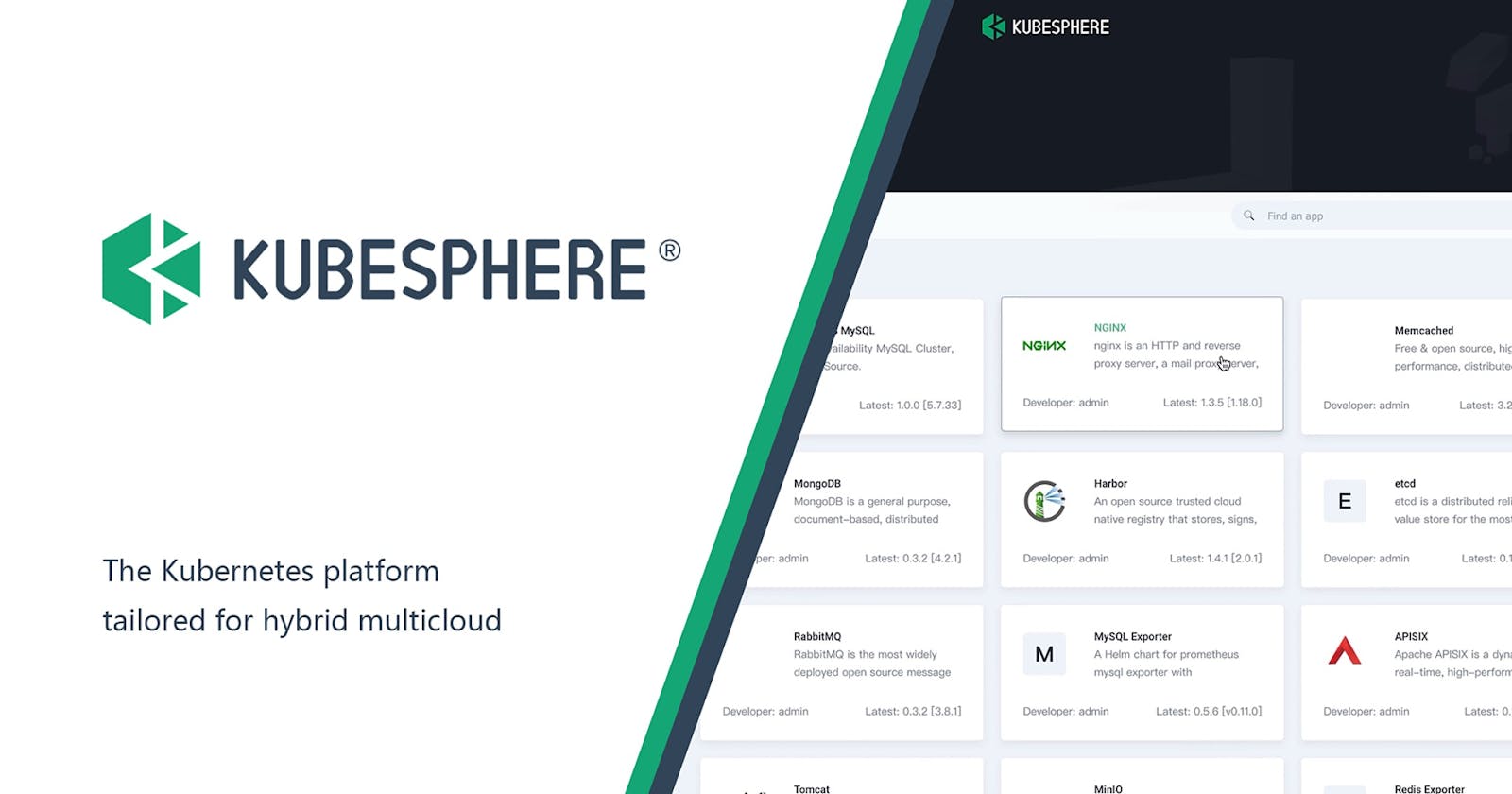KubeSphere case study
3 min read

Kubernetes is difficult
Many companies and organizations run their applications on Kubernetes. It provides a lot of useful features such as autoscaling, self-healing containers, multi-cloud deployments, and much more. All these features make Kubernetes the ideal deployment solution for containerized applications without having a lot of downtimes.
However, Kubernetes is not easy. To create, configure, and manage production-grade clusters, developers require extensive knowledge of Kubernetes, its architecture, debugging, etc. Apart from this, you would also need to know about the third-party tools which extend Kubernetes functionalities, such as Argo, Kubescape, Prometheus, and more.

Learning all these tools and technologies can take anything from a couple of weeks to a couple of months and even then, there is a chance that you could overlook some configuration settings.
KubeSphere
KubeSphere is a distributed operating system for managing your cloud-native applications. It uses Kubernetes as its kernel and has a plug-and-play architecture. This means that to use a third-party application, all you need to do is install it via KubeSphere and it is ready to use, without any additional configurations.
It provides an easy-to-use web console, that eases the learning curve for users and drives the adoption of Kubernetes. KubeSphere provides enterprises with a robust, secure, and feature-rich platform, boasting the most common functionalities needed for enterprises adopting Kubernetes, such as multi-cluster deployment and management, and network policy configuration.

KubeSphere provides high-performance and scalable container service management for enterprises by providing unified management of clusters across cloud providers, powerful observability capabilities, automated DevOps pipelines, fine-grained access control, out-of-box microservices governance, and also has a vibrant open source community
What makes it unique
As a lightweight platform, KubeSphere has become more friendly to different cloud ecosystems as it does not change Kubernetes itself at all. In other words, KubeSphere can be deployed on any existing version-compatible Kubernetes cluster on any infrastructure including virtual machine, bare metal, on-premises, public cloud, and hybrid cloud.
KubeSphere is 100% open source and the source code for all of its components can be found on GitHub. As it is open-sourced, there isn't a problem with vendor lock-in.
It also makes multi-cluster management across various cloud environments easy by providing an easy-to-use web UI for managing all your clusters from a single unified dashboard.
Conclusion
Adopting Kubernetes is a beneficial step for organizations but learning it can take a long time, especially since there are so many third-party tools that provide essential functionalities. KubeSphere aims to reduce the learning curve by managing most of the Kubernetes components.
It also provides all the tools you might require in your software lifecycle and is easy to install and get started
Get involved
Comments (1)
It's an interesting article. I have seen the terms Kubernetes and KubeSphere but now I know what it means and does. It's a great article. I would love to contribute after I finish learning what I have started.
